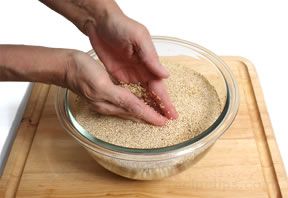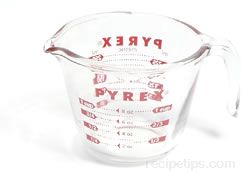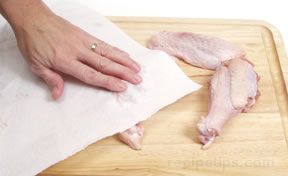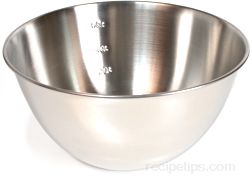| Flour is used as the main ingredient for many types of food items including breads, rolls, biscuits, pancakes, waffles, cakes, pastries, and pasta. Some food items, such as cakes, waffles, and pancakes, require only a batter to be created, which is usually liquid enough to be poured, while foods such as breads, rolls, and pasta require a dough to be formed, which is a heavier mass that usually requires some kneading or rolling. Described below are several methods for combining flour with other ingredients to create batter or dough. |
Manual Mixing - Bowl | Manual Mixing - Pastry Blender | Manual Mixing - Flat Surface
Standard Electric Mixer | Heavy-Duty Electric Mixer | Food Processor
| One of the simplest methods for combining flour with other ingredients is by stirring the ingredients together in a bowl. This method often works well for smaller quantities of batter or for batters that do not require a lengthy time for mixing and blending. |  |
Manual Mixing with a Pastry Blender
|
A pastry blender is a useful tool for combining flour with other ingredients to create dough for pie crusts. (For specific ingredients for Pie Crust Dough, see Pie Crusts in the "Kitchen Techniques" section of "Kitchen Advice".) | |
| Mix the dry ingredients for pie crust dough in a large bowl and using the pastry blender, cut in chilled shortening, butter, or margarine. |  |
| Mix the ingredients until coarse crumbs resembling the shape of tiny split peas are formed. | 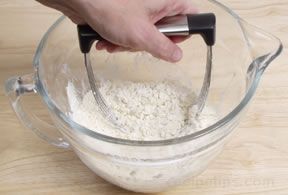 |
| Sprinkle the mixture with ice water and continue mixing using a fork. Additional ice water can be added in small increments if the dough seems to be too dry. | 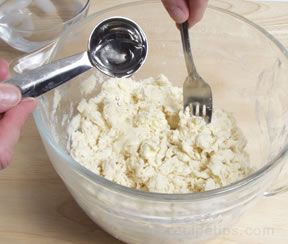 |
| Add only enough water so that the dough holds together. Pinching a small piece of dough between your fingers is a good method for testing the proper consistency of the dough. If the dough holds together, it is an indication that the proper quantity of water has been added. | 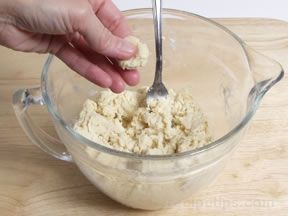 |
| The dough should be gathered into a ball, but care should be taken that the dough not be overworked. | 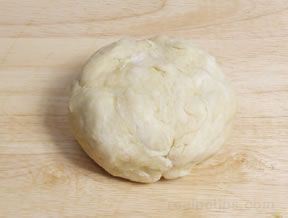 |
Manual Mixing on a Flat Surface (Well Method)
| A traditional method for mixing flour with other ingredients is to combine the dry and liquid ingredients directly on a clean, smooth work surface. This is often the method used for making homemade pasta dough. A large, smooth board or marble slab work very well for this method.
(For specific ingredients for Pasta Dough, see Making Homemade Pasta in the "Preparation Guide" section in "Pasta".) | |
| Place the flour in the middle of the work surface and create a well in the center of the flour. Add the liquid ingredients (such as the eggs shown) to the well. | 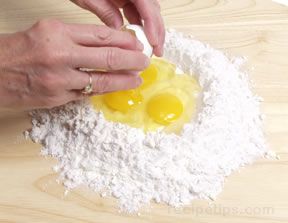 |
| Gradually mix the flour with the liquid ingredients by drawing the flour from the inside walls of the well. As shown at the right, the eggs are first lightly beaten with a fork before incorporating the flour for this homemade pasta recipe. | 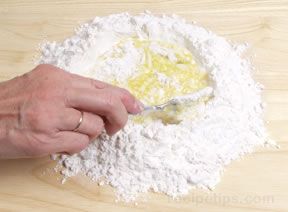 |
| Once the dough becomes thicker and begins to stick to the fork, start working the dough with your hands. Continue to draw flour from the sides of the well until all of the flour has been incorporated in the dough. | 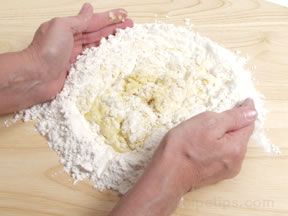 |
| If the dough is too moist and sticky, it can be sprinkled with approximately one tablespoon of flour. If the dough is to dry, 1 tablespoon of water can be added. Work the flour or water into to the dough and then determine if additional flour or water is needed. | 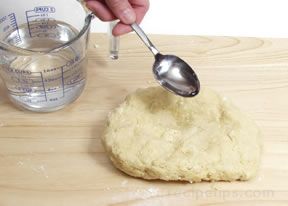 |
|
The ball of pasta dough should be moist, pliable, and a bit lumpy. |
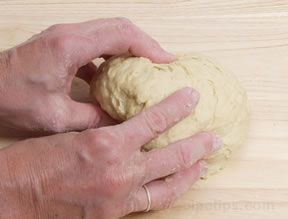 |
Mixing with a Standard Electric Mixer - Batter
| An electric mixer is often used when a larger quantity of flour and other ingredients are required for a recipe or if the ingredients require thorough blending. | 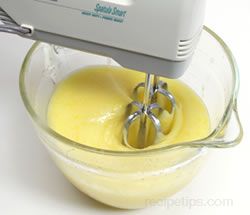 |
Mixing with a Heavy-Duty Electric Mixer - Dough
| A heavy-duty electric mixer with a paddle attachment and a dough hook attachment can be used to combine flour with other ingredients to form dough for bread making. |
| The flour and other dry ingredients should be mixed briefly on a low speed using the paddle attachment. | 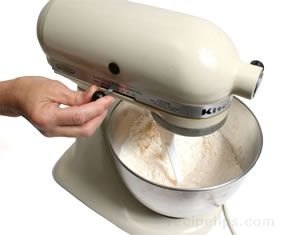 |
| Add the liquid ingredients and continue mixing on a slow speed. | 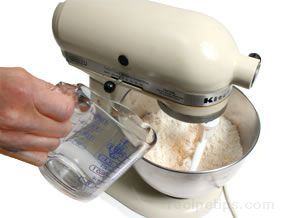 |
| When the ingredients are blended, stop the mixer and replace the paddle attachment with the dough hook attachment. | 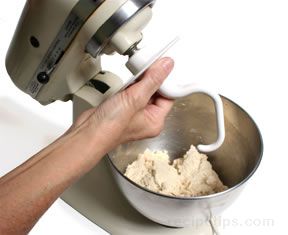 |
| Raise the speed of the machine to medium and mix the ingredients until the dough pulls away from the sides of the bowl. | 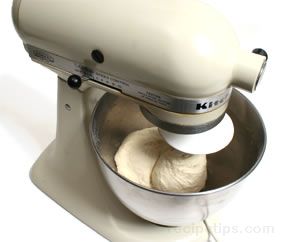 |
| If the dough is too dry, it will not form a ball. To moisten the dough, add 1 teaspoon of water. If the dough is too sticky, add 1 teaspoon of flour. | 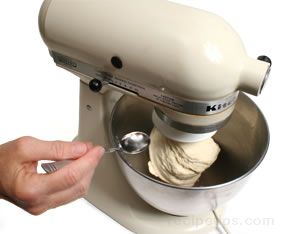 |
| Continue to add more water or flour until the dough is the correct consistency. The entire mixing and kneading process requires only 6 to 8 minutes for most basic bread doughs, but make sure to follow the instructions on the recipe. Use a spatula or a dough scraper to remove the dough from the dough hook. | 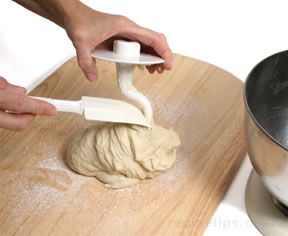 |
| Another handy method for mixing flour with other ingredients is with a food processor, which combines the ingredients quickly and easily. Be sure the food processor is fitted with a plastic dough blade or a metal chopping blade if dough, rather than a batter, is being prepared. | |
| Add the flour and other dry ingredients to the container and switch on the machine. Gradually pour the liquid ingredients through the feeding tube while the machine is running. |  |
| Continue to process the ingredients until the dough forms a ball and begins to ride up in the center above the blades. If the dough is too dry, it will not form a ball. To moisten the dough, add 1 teaspoon of water. If it is too sticky, add 1 teaspoon of flour. Continue to add more water or flour until the dough is the correct consistency. | 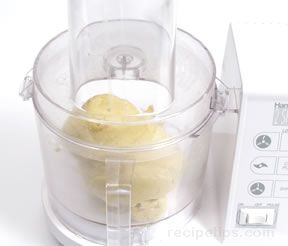 |





